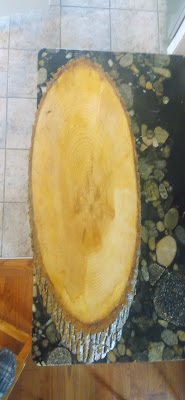Sometimes I forget that I didn't always have a workshop in the basement containing nearly every tools my heart desires. For a few years I lived in apartments and rental properties where I bore few maintenance responsibilities. If sometihing broke, it wasn't my concern, I remember several times leaving a message with the property mananger as I left for work and returned to the problem solved later in the day. There is something good to be said for that situation. I was single and working longer days at the time and so ....it was nice to have broken doors and plugged plumbing dealt with by someone else.
But,,,,
there were still things that I wanted customised to suit my taste and personal items of furniture that sometimes need to be repaired.
To fill that need I gathered my first tools together a piece at a time.
My first tools lived in a shoe box in a closet for years. What were the first tool necessities ?
1. a utility knife, with replaceable blades. The blades are good for cutting and scrapping and you can abuse them with a clear conscience.
2 a small claw hammer. buy something cleap and basic 10 or 12 ounces is big enough.
3 muiti-tip screw driver and a 6 inch adjustable wrench. Do Not buy cheap versions of either of these tools. Cheap wrenches, slip and can break dangerously. Cheap screwdrivers have tips that are soft and fairly random in sizing. Not all Philip's or Robertson tips are equal.
4. decent tape measure and a metre stick. I bought a heavy duty 25 foot tape forty years ago and it is still the tape I take with me when I am limiting the number of tools I take with me.
5. Various pliers. needle nose. linemens, water pump and locking. Also don't go cheap on these. You will use them for the rest of your life and cheap pliers will slip, slide and end up having to be replaced while the skin on your knuckles slowly grows back.
6. hack saw, it will cut up junk including old bits of furniture and wood. It is not a surgical tool, but a versitile one.
These are the tools that will hang pictures, fix bicycles, tighten loose legs, cut up junk, fix lamps, hang fixtures etc.etc etc. and enable various arts and crafts.
If you want to take the next step and move from fixing things to making things all these tools remain useful but... there is a universe of other good, bad, and special tools connected with DIY and making.




















































